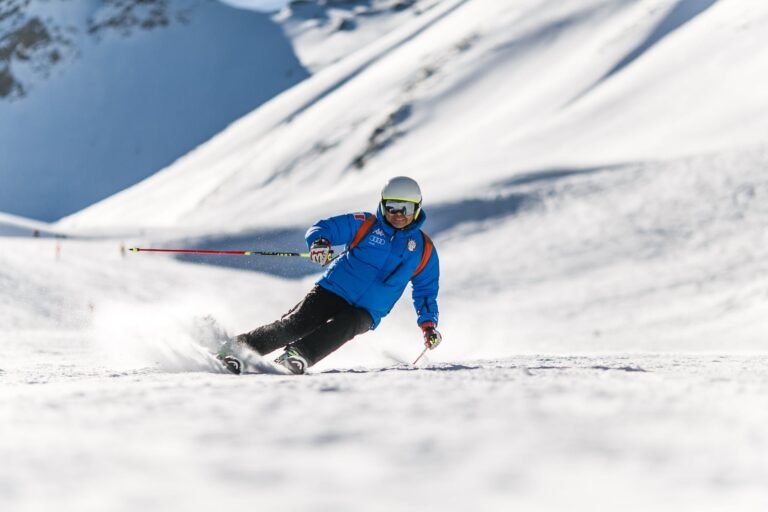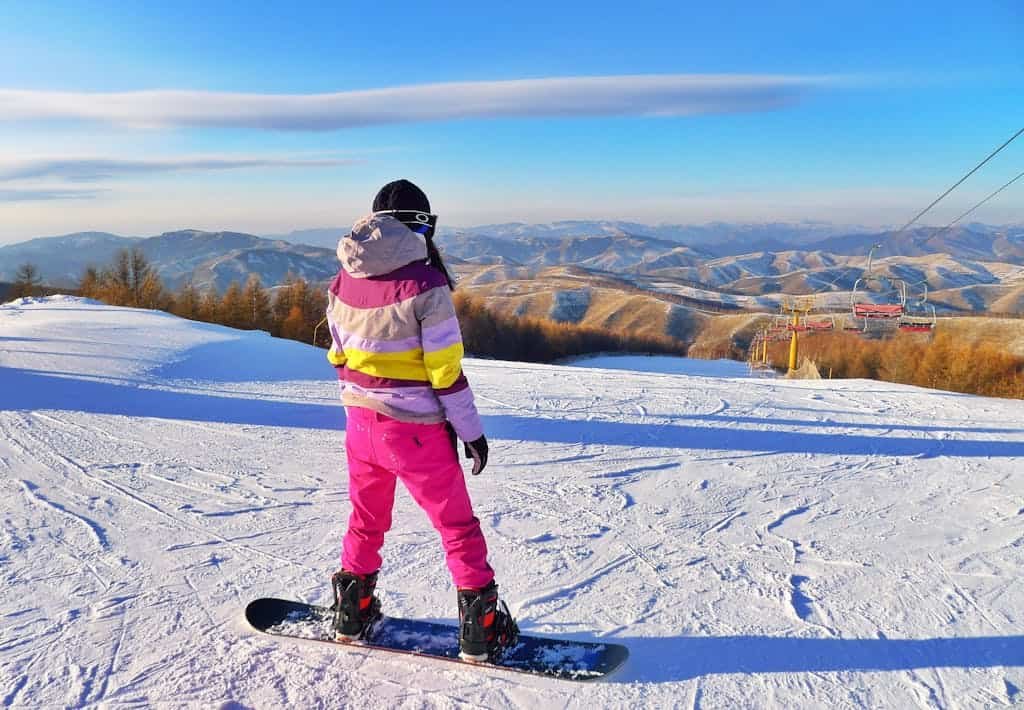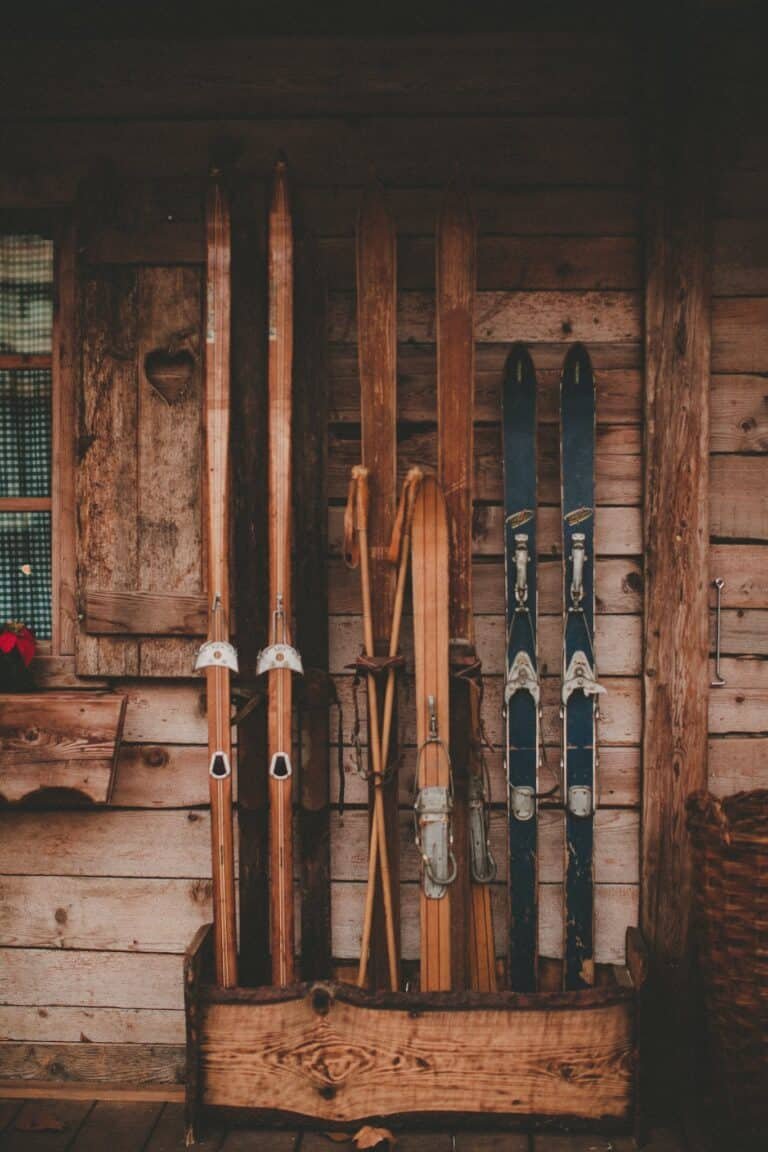Ski Pole Size Chart: Guide to Finding the Perfect Size for You
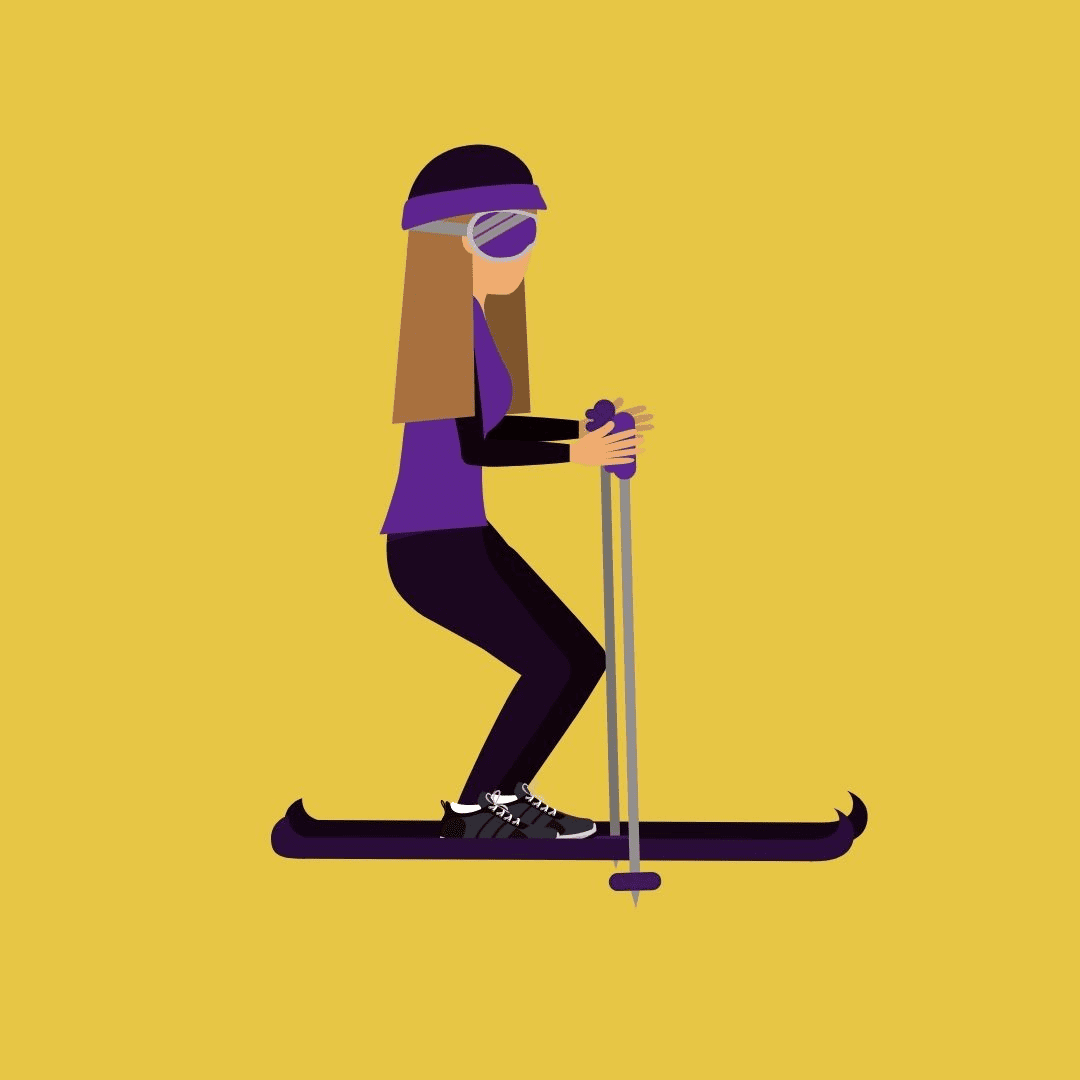
Proper ski gear is crucial for skiing, including appropriate skis, ski bindings, ski boots, and ski poles. It helps you maintain balance and keep you upright. But how do you know what size you need?
That’s where this guide comes in. We’ve put together a ski pole size chart to help you choose the right size. From different materials to basket sizes, we’ve got all the information you need to make sure you’re picking the right length for your style.
Ski Pole Size Chart
To determine the correct ski pole length, hold an alpine ski pole upside down and grip it just below the basket. If the pole is the right size, your arm will form a 90-degree angle with your elbow by your hip, and your forearm will be level with the ground. This “right angle rule” applies to those of average height and arm length. Variations in arms length among individuals of the same height can lead to different pole length requirements, so this method ensures a custom fit.
If you’re without ski poles, use a tape measure from your hand to the floor with your elbow bent at a 90-degree angle, then add two inches to account for the pole’s part that sinks into the snow. Remember, if park riding is your preference, poles can be shorter for better balance and less interference with tricks, or you might opt to ski without poles to avoid entanglement during jumps and rails.
| Skier Height | Downhill Pole Length (in) | Downhill Pole Length (cm) | Cross Country Classic Pole (cm) | Cross Country Classic Pole (in) |
|---|---|---|---|---|
| < 3’4″ | 32 and below | 80 and below | 80 | 31.5 |
| 3’4″ – 3’5″ | 32 | 80 | 80 | 31.5 |
| 3’5″ – 3’7″ | 34 | 85 | 85 | 33.5 |
| 3’8″ – 3’9″ | 34 – 36 | 85 – 90 | 85 – 90 | 33.5 – 35.4 |
| 3’10” – 4’0″ | 36 | 90 | 90 | 35.4 |
| 4’1″ – 4’4″ | 36 – 38 | 90 – 95 | 95 – 100 | 37.4 – 39.4 |
| 4’5″ – 4’8″ | 38 – 40 | 95 – 100 | 100 – 115 | 39.4 – 45.3 |
| 4’9″ – 5’0″ | 40 – 42 | 100 – 105 | 115 – 120 | 45.3 – 47.2 |
| 5’1″ – 5’3″ | 44 | 110 | 125 – 130 | 49.2 – 51.2 |
| 5’4″ – 5’6″ | 46 | 115 | 135 – 140 | 53.1 – 55.1 |
| 5’7″ – 5’9″ | 48 | 120 | 140 – 145 | 55.1 – 57.1 |
| 5’10” – 6’0″ | 50 | 125 | 145 – 150 | 57.1 – 59.1 |
| 6’1″ – 6’3″ | 52 | 130 | 155 – 160 | 61.0 – 63.0 |
| 6’4″ – 6’6″ | 54 | 135 | 165 | 65.0 |
| 6’7″ + | 56 | 140 | 170 | 67 |
How to Choose The Right Length of Ski Poles
Choosing the right pole length is perhaps the most important factor. Here’s what you need to know:
Body Height
This is the first metric you should look at when selecting your ski poles as it will give you a good idea of where to start in terms of sizing. Generally, for adults, the average height ski pole is around 115cm.
Arm Length
Your arm length is important when selecting your ski poles as this will help you decide how much of your upper body and weight should be carried by the pole. Generally, for adults, the ideal length is 1/3 of their total arm length.
Terrain Type
Are you planning to ski on flat terrain or downhill? The type of terrain will determine the pole length you need. For example, if you’re an all-mountain skier who likes to go off-piste then a longer pole might be more suitable for better balance and control.
Different Types of Ski Poles Based on the Terrain
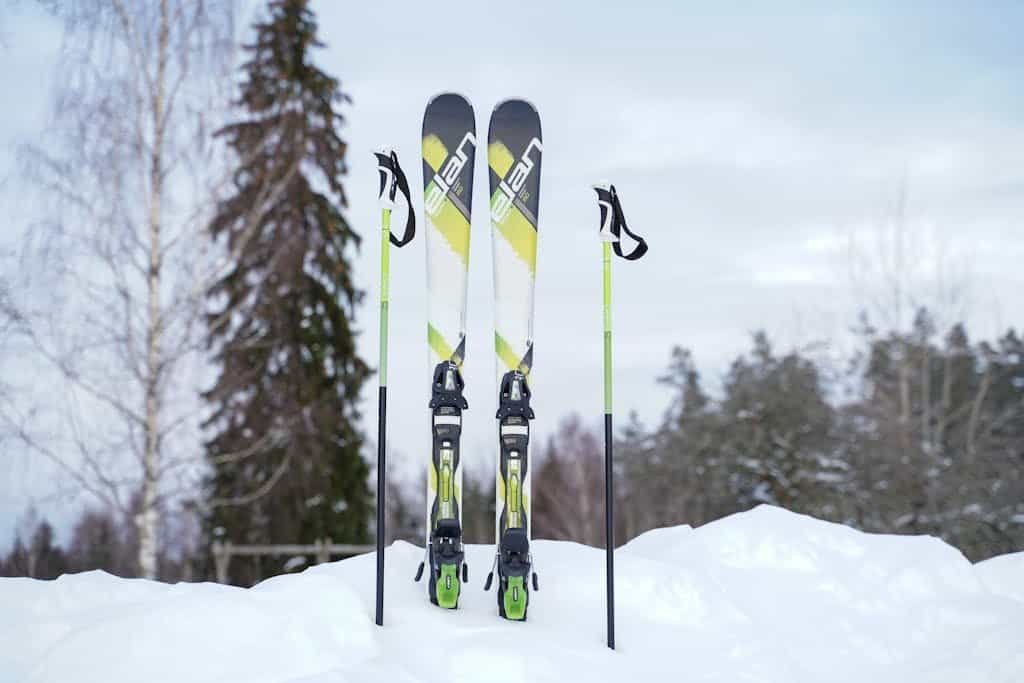
All-Mountain Poles
All mountain skiers will want a pole that is versatile enough to handle various types of terrain. The ideal length for all-mountain ski poles is between 120-135cm as this will provide enough support and stability on the slopes without being too long.
Alpine Ski Pole
For alpine skiers, a pole that is lightweight yet sturdy is essential for optimal performance on the slopes. The ideal length for alpine poles is between 130-150cm as this provides the perfect balance of stability and control.
Powder Poles
If you’re an advanced skier who likes to go off-piste and explore the fresh powder then you’ll want a pole that is slightly longer than normal. The ideal length for powder ski poles is between 140 and cm-150 cm as this provides extra support and stability when in deeper snow.
Park Poles
If you’re an avid park skier then you’ll want a pole that is lightweight and responsive. The ideal length for park ski poles is between 115 and 125cm as this will give you enough support without being too long or cumbersome.
Freeride Poles
Freeriders need a pole that is strong enough to handle more challenging terrain while still being lightweight enough to be comfortable on the mountain. The ideal length for freeride ski poles is between 130-140cm which provides the perfect balance of support and maneuverability.
Race Poles
For ski racers, you’ll need a pole that is light and responsive. The ideal length for race ski poles is to fall between 115-125 cm as this will provide enough control while still allowing you to move freely on the mountain.
Types of Ski Poles
Aluminum ski poles are the most common type, due to their durability and affordability. They usually feature a rubber or synthetic grip for comfort and a steel tip for better traction on ice.
Composite ski poles are usually made from carbon fiber, which is lightweight yet strong. They provide superior shock absorption and are often used by intermediate skiers. They also feature ergonomic grips for better control and comfort.
In addition, ski poles may also be categorized by their length—shorter poles are typically used for recreational skiing, while longer poles are preferred by racing and high-performance skiers. Ski pole baskets come in a variety of sizes and shapes depending on the type of terrain and skiing that is being done. Some baskets are designed for soft snow, while others may be more suited to hard or icy conditions. There are also adjustable poles available which make it easy to customize the length of the pole according to your height and skill level.
Basket Types for Ski Poles
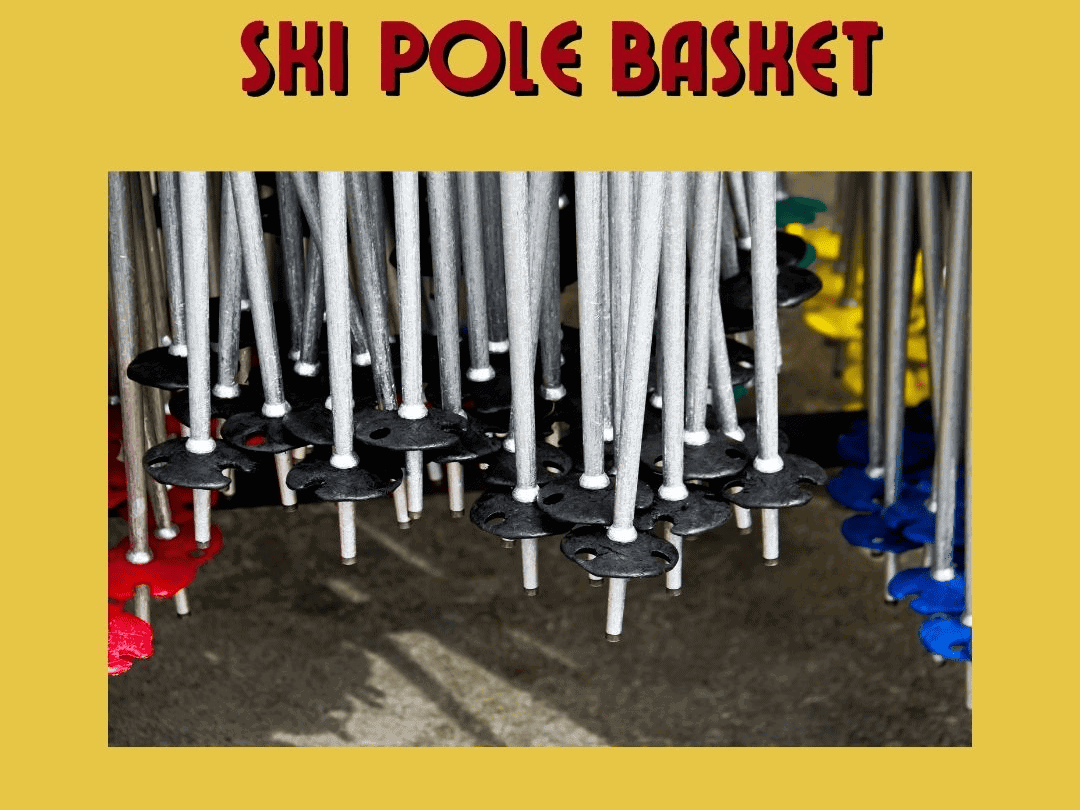
The type of basket on your ski poles is not merely an afterthought; it plays a crucial role in how you navigate the snow. Ski pole baskets come in various shapes and sizes, each tailored for specific snow conditions and skiing styles. When selecting a basket type, the terrain and snow you’ll be encountering are paramount considerations.
Standard baskets are typically small and circular, designed for groomed runs where the snow is packed and firm. Their compact size facilitates quick, agile movements, allowing skiers to plant their poles with precision and minimal drag. This basket type is a favorite among racers and those who love carving up the piste.
For those venturing into powder, larger powder baskets are the go-to. They feature a significantly broader circumference which prevents poles from sinking too deeply into the snow. This ensures stability and support with each pole plant, a necessity when skiing in deep, fresh snow. The larger surface area acts much like a snowshoe, distributing your weight over the soft terrain.
Freestyle and park skiers might opt for smaller baskets still, as oversized baskets can snag on obstacles or impede movement. A minimalist design keeps the poles light and less cumbersome, enabling skiers to execute tricks and jumps with more freedom.
For backcountry enthusiasts, there are baskets designed to handle a mix of conditions, from hard-packed trails to untracked powder. These versatile baskets can often be interchanged, allowing skiers to customize their poles according to the day’s conditions. This adaptability makes them an excellent option for skiers who enjoy exploring a range of environments.
The materials used in basket construction also matter. Most are made from durable plastics that can withstand the cold and impact. Some may include metal edges for chopping at ice or firm snow. Regardless of the material, the basket must be sturdy enough to endure repeated contact with the snow and terrain.
How to Choose the Ski Pole Basket
When choosing ski poles, the size of the basket is an important factor that often gets overlooked. The basket is a circular or star-shaped attachment near the bottom of the pole, and its size significantly impacts your skiing experience. Smaller baskets are designed for groomed trails and hard-packed snow, where you need less surface area to prevent the pole from sinking too deeply. They’re ideal for swift turns and racing scenarios, providing minimal resistance and allowing for quick, precise movements.
Conversely, larger baskets are better suited for powder conditions. They distribute the force over a larger area, preventing the pole from plunging too deep into the soft snow. This is crucial for maintaining balance and momentum in off-piste terrain, where stability is key. Without an adequately sized basket in powder, you would find your poles ineffective, as they would not offer the necessary support, leading to increased fatigue and possibly affecting your control.
For backcountry skiers and those who frequently encounter deep snow conditions, choosing a pole with a larger basket is wise. Some poles come with interchangeable baskets, which is a versatile option for skiers who enjoy a variety of conditions and don’t want to commit to one pole type. Switching between larger baskets for powder days and smaller ones for groomed runs is a convenient way to adapt to the day’s conditions.
Additionally, the basket’s design contributes to aerodynamics and, in some cases, can add a stylistic element to your ski gear. While aesthetics are a personal choice, functionality should always be the priority. Always consider the terrain you’ll be skiing most often when selecting your basket size.
First, it’s important to know the different lengths or the correct length of the pole that is appropriate for your height and style. Generally speaking, most skiers will be able to find a pole that ranges from shoulder height to slightly below their chin when standing upright.
Second, you should consider the type of grip that is most comfortable for you. Most poles feature either a foam or rubber grip. Foam grips tend to be more comfortable but less durable, while rubber grips are known for their durability and strong grip.
Finally, it’s important to look at built-in features like adjustable straps and shock absorbers. These features can help you keep your balance and reduce the stress on your arms, wrists, and hands.
Conclusion
Selecting the right basket type and right ski pole length are critical decisions that can greatly influence your performance on the slopes. Whether you’re carving through groomed trails, floating in deep powder, or performing tricks in the park, there’s a ski pole designed to meet your needs. By understanding the demands of your preferred terrain and conditions, you can choose a ski pole that provides the optimal balance of support, maneuverability, and durability. As you gear up for your next mountain adventure, make sure your ski poles are equipped with the right baskets to support your ski style and ambitions. You can check websites like Amazon, Evo, and Rei to find good sets for your adventure. Happy skiing!
FAQ
Q: What is the correct size for ski poles?
A: The correct ski pole sizing depends on a few factors, such as your height, style, and the type of terrain. Generally, for adults, ski pole size should come up to your armpit or just below your chin. For children, ski poles should come up to their chin or slightly above the bend of their elbow.
Q: What is the difference between ski pole length and diameter?
A: Ski pole length is the length of the pole from the tip to the handle, while the diameter is the width of the pole. Generally, longer poles are better on steeper terrain, while shorter poles are better on flat terrain.
Q: What is the best material for a ski pole?
A: The best material depends on your budget and your style. Generally, aluminum is the most affordable and durable option, while carbon fiber poles are lighter but more expensive. Choose a material that will fit your needs without breaking the bank.
Q: Which pole grip is the best?
The best grip depends on your preference. Generally, foam grips are comfortable but not very durable, while rubber grips offer increased durability and a good grip. Choose the option that feels the most comfortable in your hands.
Q: What is the right ski pole length for me?
A: The right ski pole length for you depends on a few factors, such as your height, style, and the type of terrain you’ll be skiing on. Generally, for adults, the poles should come up to your armpit or just below your chin.

